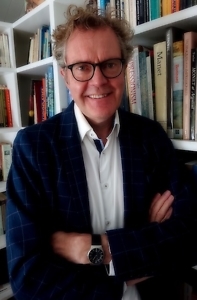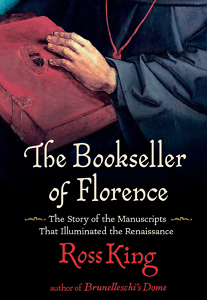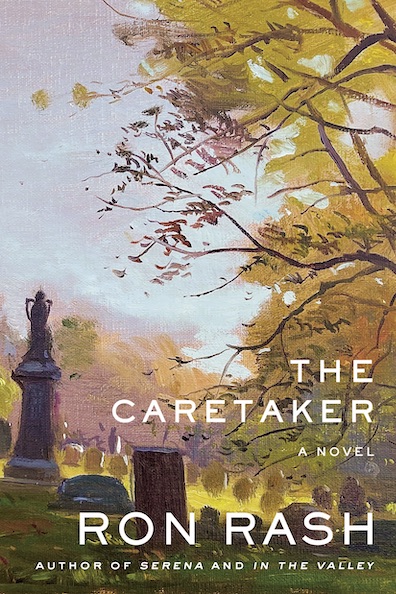A Book for Book Nerds
Ross King details the book industry of the Italian Renaissance
The irony was exquisite reading Ross King’s The Bookseller of Florence on an iPad using Kindle software.

In this history book about books for book nerds, the transition from handwritten to printed books during the Italian Renaissance is detailed. Today, we’re living through the next transition — from print to digital.
Vespasiano da Bisticci, called “king of the world’s booksellers” and “prince of Florentine booksellers” by contemporaries in the 15th century, makes for a compelling central figure in The Bookseller of Florence, but a lot of the fun comes when the author diverges from Vespasiano to share the origins of book-related minutia.
Did you know that the first “bookworms” were actual worms that consumed papyrus, the plants used to make paper for books in the early 1400s? How about the beginnings of the phrase “It’s Greek to me,” which comes from frustrated scribes who came upon Greek words and phrases they couldn’t translate? Did you know that the emperor Charlemagne zealously promoted literary studies in the eighth century, despite being illiterate himself?
One more: The first freebie promotional copies of a book were sent out by Cardinal Basil Bessarion around 1469. The result was that the collection of writings by the philosopher Plato was promoted with the first ever blurbs, promotional quotes to plug sales.
King effectively contrasts the drive to improve and learn to the frequently extreme violence in society at the time in the age of the Medici. The Bookseller of Florence has many anecdotes involving severed heads on stakes and other bodily mutilations. And there’s lots of gout. It turns out that gout was a big problem during this tumultuous time.
As King illustrates, Vespasiano was an expert networker who sometimes sold his books to both sides of warring parties, somehow keeping his own head from going on one of those stakes. Vespasiano “was the most accomplished, prolific, and influential producer of manuscripts during the fifteenth century,” King writes. He took commissions to create books that were read by “popes, ecclesiastics, kings, and all learned men.”
 He was the force behind the creation of at least 1,000 manuscripts during his career, commissioning translators, calligraphers, and illustrators, and he was the intermediary in the sale of countless other books.
He was the force behind the creation of at least 1,000 manuscripts during his career, commissioning translators, calligraphers, and illustrators, and he was the intermediary in the sale of countless other books.
Johannes Gutenberg sealed the doom of hand-crafted books in the 1450s with his invention of the printing press. But it took a while for handwritten books to fade away. There was concern that the swiftness of the printing process would lead to errors. One scholar thought it a negative thing that knowledge would be available to people who “in happier times” couldn’t get it. The Benedictine monk Filippo da Strada worried that printers would manufacture low-cost books “suggestive of sexuality,” anticipating the pornography industry.
By 1472, more books were printed than manuscripts copied for the first time, at least north of the Alps, according to King. “Many readers agreed that this new method of producing books was wonderful, even miraculous,” he writes. “Over the next few years, various bishops, scholars, teachers, doctors, and friars would proclaim printing a ‘holy art,’ a ‘new and almost divine way of writing.’”
Vespasiano closed his shop after almost 50 years in business and retired as printing outpaced his business model. But he began a new career — as a writer.
If King’s account of Vespasiano and his era shows a weakness, it is one of overzealousness. Some of his explanations, especially about the process of creating a book, give more detail than many readers will want. But Vespasiano’s story is remarkable, and King does a meritorious job of telling it, along with many interesting detours.

Jim Patterson is a freelance writer in Nashville. His work appears regularly on the United Methodist News website, UM News. He formerly covered country music for the Associated Press and was a public affairs officer and senior writer at Vanderbilt University.


